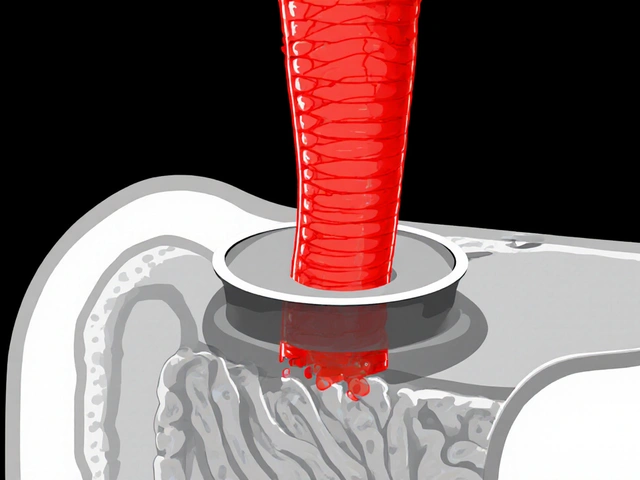Nitrofurantoin: Quick Facts, Safe Use & Recent Posts
If you’ve ever been told to take nitrofurantoin, you probably know it’s an antibiotic for urinary‑tract infections (UTIs). It works by stopping bacteria from growing in the bladder, which helps clear the infection faster. Most people finish a 5‑ to 7‑day course and feel better within a couple of days.
While nitrofurantoin is effective, it’s not a one‑size‑fits‑all medicine. Your doctor will look at your kidney function, any allergies, and other meds you’re on before prescribing it. That’s why it’s worth knowing the basics: how to take it, what side effects to watch for, and when to call your doctor.
How to Take Nitrofurantoin Correctly
Take the tablets with food or milk. Food helps the drug absorb better and reduces stomach upset. Swallow the pills whole – don’t crush or chew them unless your doctor says it’s okay.
Common dosing is 50 mg to 100 mg twice a day, but your doctor might adjust the amount based on the infection severity and your health status. Finish the whole prescription even if you feel better; stopping early can let bacteria bounce back.
Keep a glass of water handy and stay hydrated. Drinking enough fluids flushes bacteria from your urinary system and can lessen the chance of a repeat infection.
Side Effects and Safety Tips
Most people tolerate nitrofurantoin well, but a few side effects pop up. Look out for nausea, loss of appetite, or a mild rash. If you notice dark urine, that’s usually harmless and fades after the drug clears from your system.
Serious reactions are rare but need immediate attention: severe itching, swelling of the face or throat, or breathing trouble could mean an allergic reaction. Also, some folks develop lung issues if they take nitrofurantoin for a long time. If you develop a new cough, shortness of breath, or fever, talk to your doctor right away.
People with poor kidney function often can’t use nitrofurantoin because the drug won’t clear properly and could build up to unsafe levels. Your doctor will run a quick blood test to confirm your kidneys are working well enough.
Latest Nitrofurantoin Articles on NHYIP
Our tag page pulls together all the nitrofurantoin‑related content you might need. Here are a few recent posts you might find useful:
- How to Treat Diaper Rash from Heat and Humidity – while not about nitrofurantoin, this guide helps parents keep babies comfortable during infections.
- Aceon (Perindopril) Uses, Dosage, Side Effects, Interactions – a quick look at a common blood‑pressure med that can be taken alongside nitrofurantoin.
- Online Pharmacy ycdscc.com: How to Access, Verify Safety, and Order Meds – tips on buying nitrofurantoin safely if you need a refill online.
- Buy Generic Nitrofurantoin Online Cheap: 2025 Safety Checklist – step‑by‑step guide to finding legit pharmacies and avoiding counterfeit pills.
- Nitrofurantoin Dosage Adjustments for Kidney Impairment – expert advice on how doctors tweak the dose for safe use.
Each article is written in plain language, so you can get the facts you need without wading through medical jargon. Bookmark the tag page to stay updated whenever we add new nitrofurantoin resources.
Bottom line: nitrofurantoin is a trusted UTI antibiotic when taken as directed. Know the proper dosing, stay aware of side effects, and use reputable sources for refills. If anything feels off, reach out to your healthcare provider – they’re the best guide for your specific situation.
In 2025, patients seeking alternatives to the antibiotic Flagyl have several options. This article explores nine alternatives, detailing their uses, advantages, and disadvantages. Each alternative has unique properties that cater to different infections and patient needs. From Nitrofurantoin's specific efficacy for urinary tract infections to other modern options, this guide helps you navigate your choices effectively.
Continue reading





